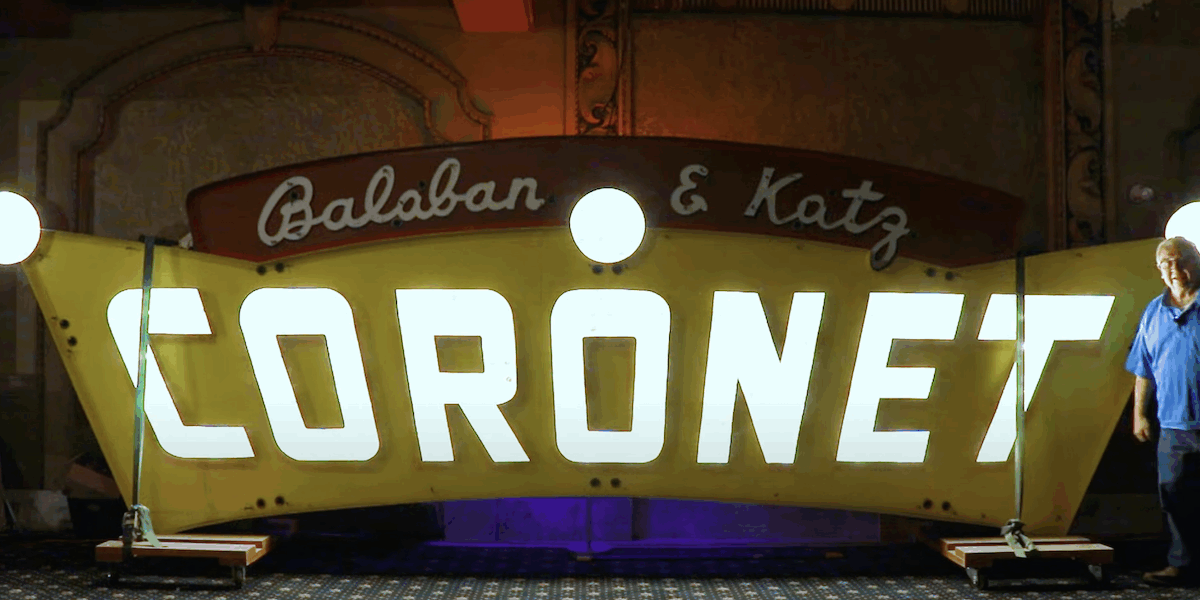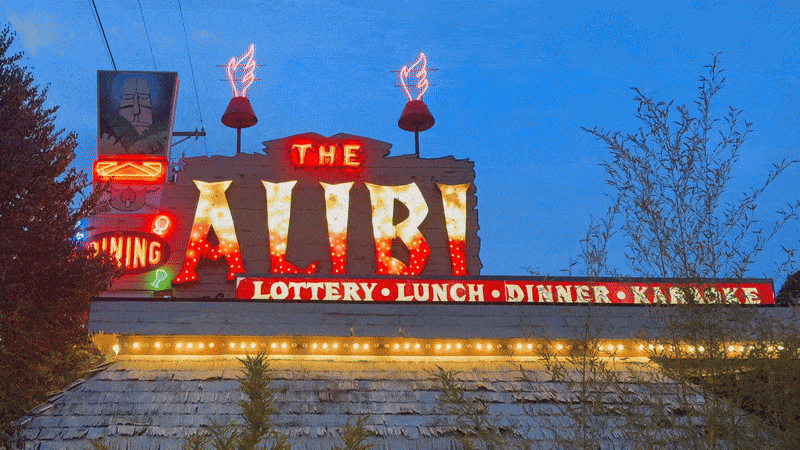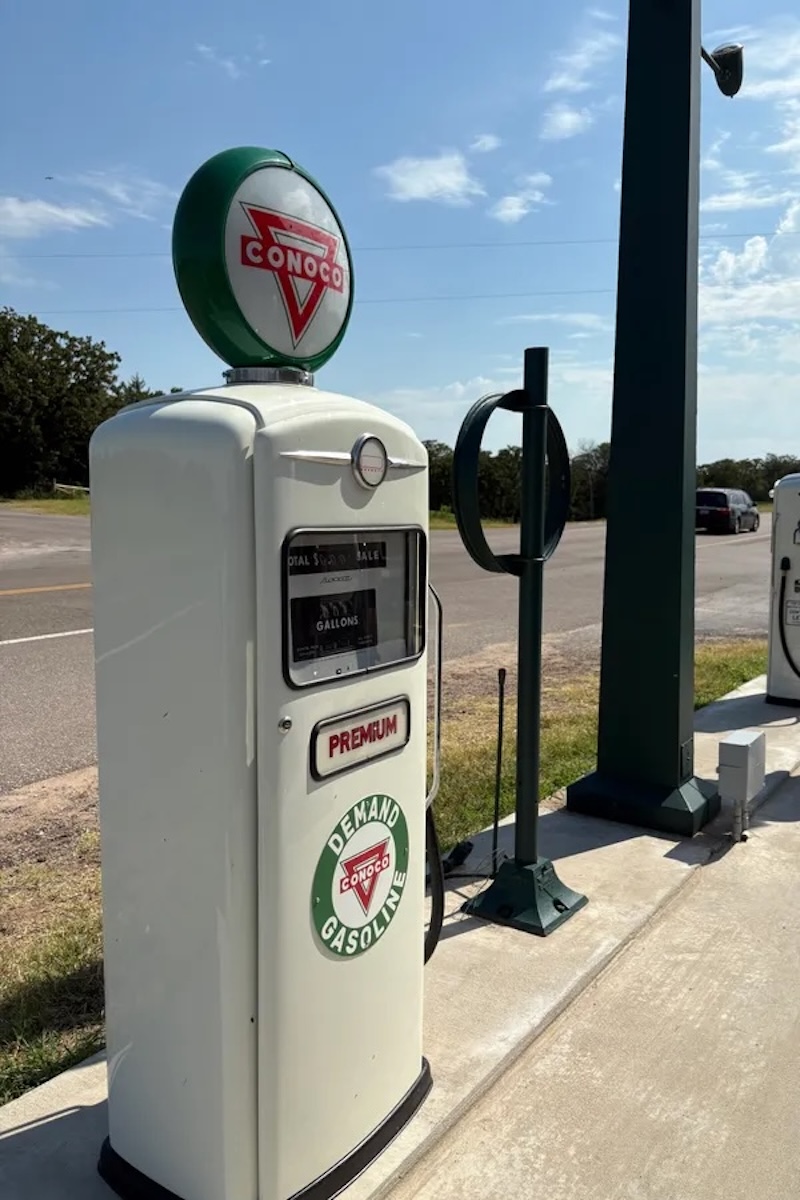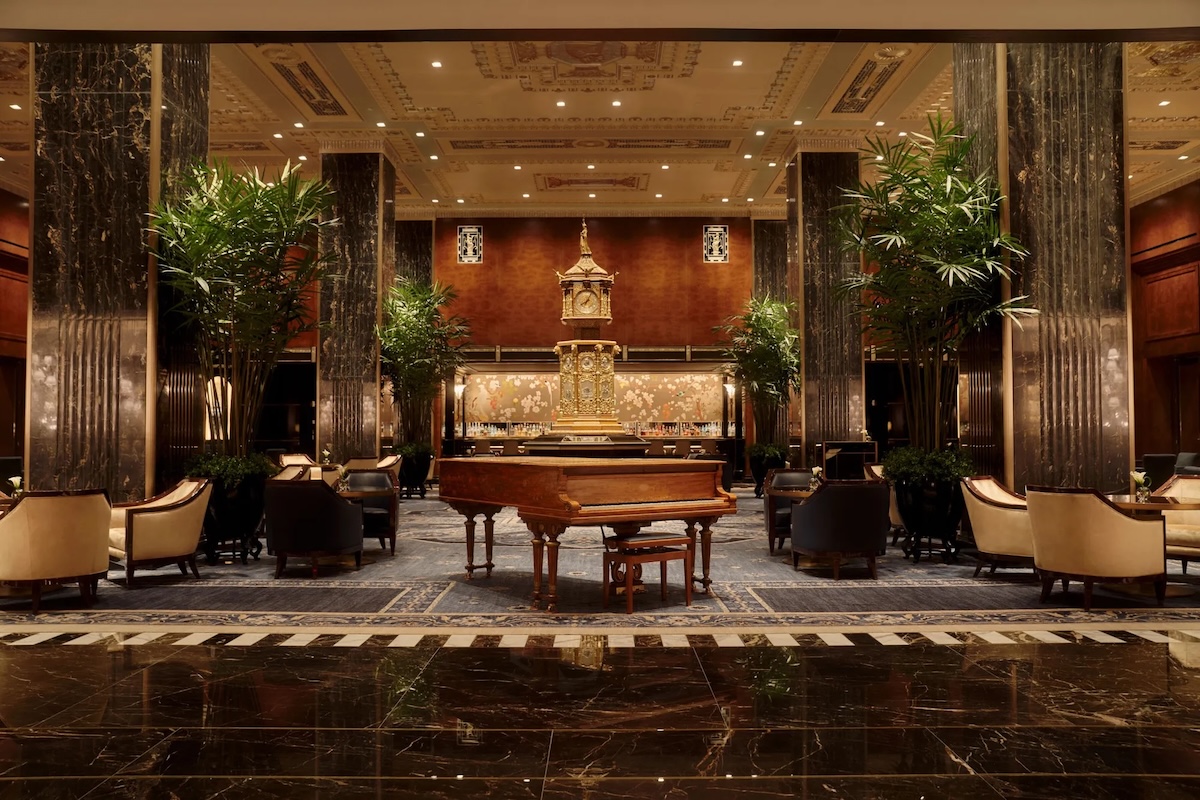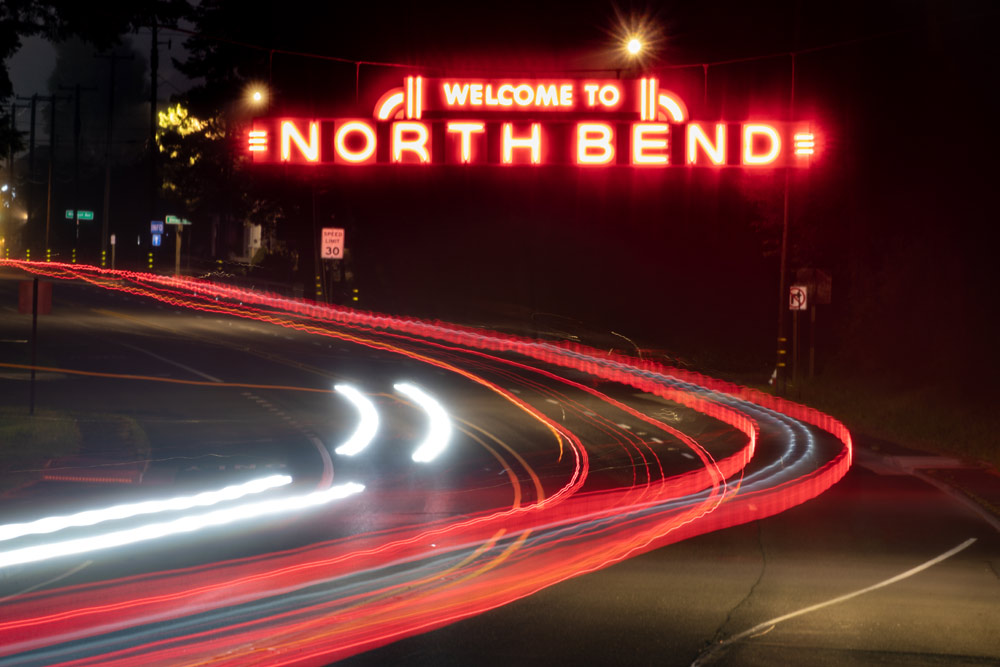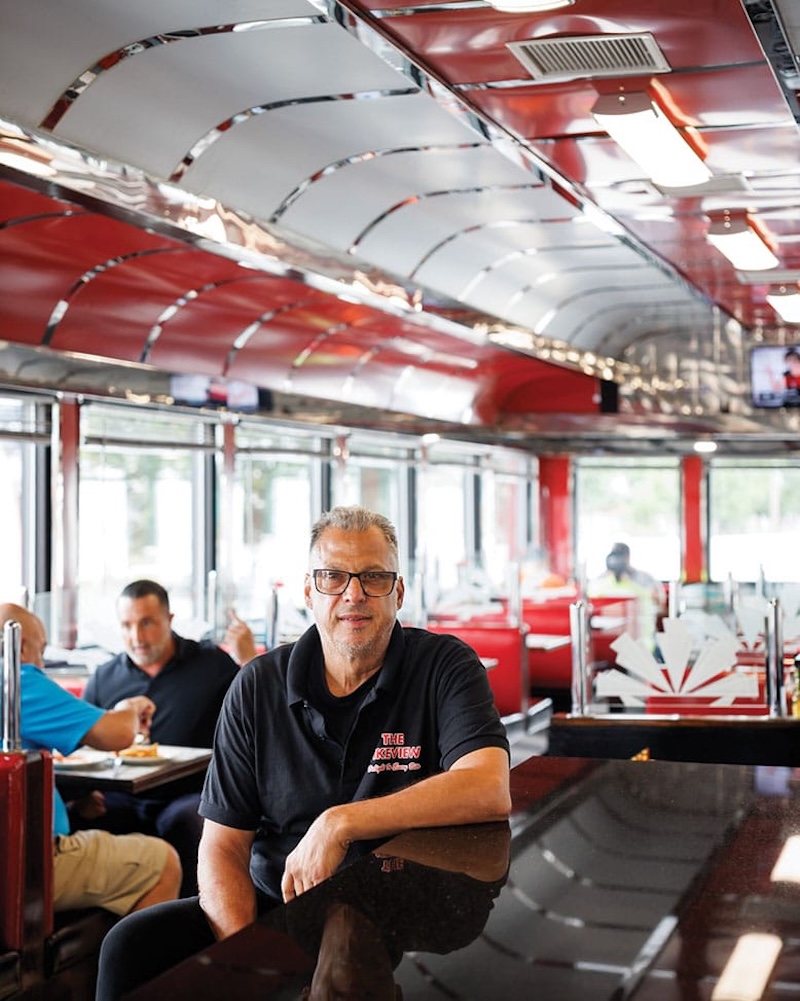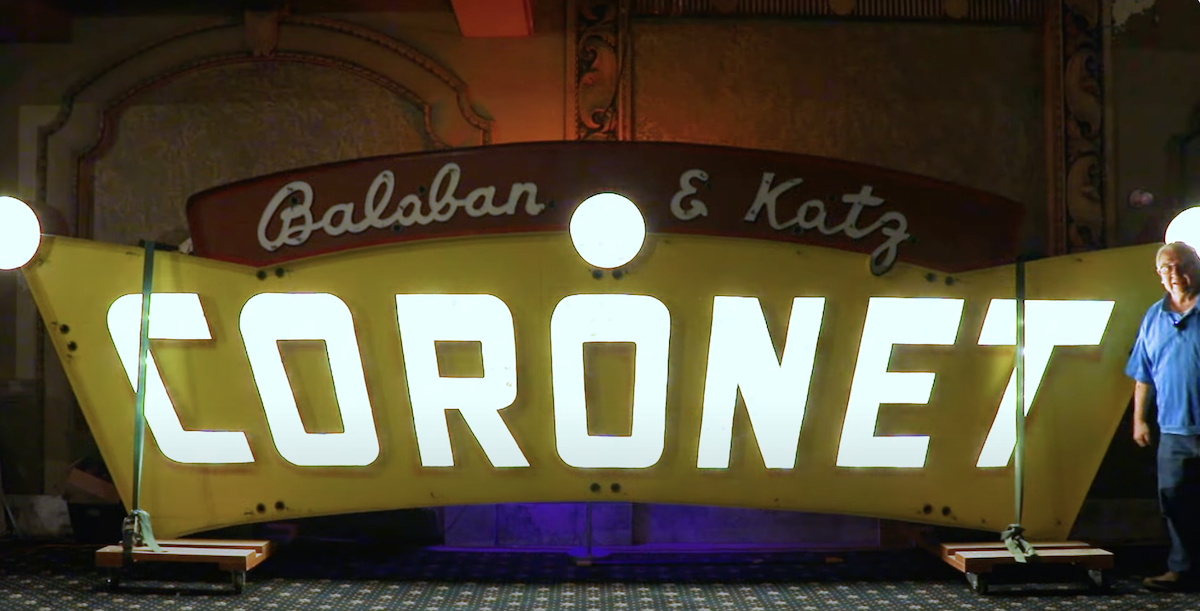Portland’s neon sign past is fighting for a future
Large scale, exterior neon signs like this have become a thing of the past in Portland. Image: Meira Gebel/Axios
From Axios Portland: The Montgomery Park sign sits atop its namesake nine-story westside building — 30-foot-tall letters glow bright red and can be seen from across the Willamette thanks to one thing: neon.
Why it matters: Neon signs are more than just business markers, they’re cultural landmarks. But local artists and preservationists warn development, regulation and cheap LED knockoffs could threaten the craft’s future.
Historic haven for Black travelers in Luther gets Route 66 marker, pieces of past back
From The Oklahoman: LUTHER ― A vintage cash register has been returned to its home at a historic property along Route 66 and two vintage Conoco fuel pumps identical to those from a bygone era have also been installed.
These additions were on full display at the dedication of a special Route 66 monument outside the Threatt Filling Station in Luther.
Threatt family members were joined by a crowd of residents, community leaders and public officials for the dedication of the eighth monument installed along the Mother Road in Oklahoma as part of the Route 66 Centennial Monument Project. As an official project of the U.S. Route 66 Centennial Commission and the Oklahoma Route 66 Centennial Commission, the monument project is being implemented by the National Park Service, in partnership with the Route 66 Road Ahead Partnership.
A Look Inside Waldorf Astoria New York’s Eight-Year, $2 Billion Revival
The the lobby, with the Cole Porter piano and iconic clock. Photographer: Seth Caplan for Bloomberg Pursuits
From Bloomberg: When the Waldorf Astoria New York opened on Oct. 1, 1931, it was “the biggest and most elegant and luxurious hotel in the world.” That’s according to the gregarious Italian who runs it today, managing director Luigi Romaniello.
He’s spent much of his tenure at the Waldorf revisiting its history. After all, it’s been closed for the entire time that Romaniello has been on the job. But now he’s ready to cut the ribbon on the hotel’s next chapter.
As the last journalist to walk the building (and explore its secret spaces) before it closed in 2017 for an eight-year renovation, I was honored when Romaniello invited me to also be one of the first to see the hotel’s reimagination. The project was no mere cosmetic brush-up—it cost $2 billion according to many estimates. (Renovation costs have been reported by the Wall Street Journaland others, but Hilton would not confirm the figure.)
North Bend’s Neon Sign Glows Again: History of the South Oregon Coast Icon
Photo courtesy Oregon’s Adventure Coast
From the Oregon Coast Beach Connection: Sometimes it’s good when history repeats itself, especially in the case of the “Glowing Legacy” of one landmark at North Bend in Coos County.
For almost 100 years, the south Oregon coast burgh has had a bit of an anomaly when it comes to highway signs. By most standards, that glowing, buzzing beauty made of neon that greets people coming into North Bend isn’t supposed to be there. Call it an act of aesthetic rebellion or simply a quirk of history, but the giant neon “Welcome to North Bend” sign was breaking the rules when it was installed in 1936, and maybe even in 2010 when it was replaced.
New Jersey Diners Won’t Go Down Without a Fight
Pikeview Diner co-owner Dennis Centanni helped to save the Kearny restaurant after he heard it was set to be demolished. Photo: Colin Miller
From New Jersey Monthly: On a rainy day in June, the chrome-and-red paneling of the Pikeview Diner in Kearny glistened under the gray sky.
Dan Bies was eating a chicken wrap before heading back to work at a construction site across the street. A Michigan native, he comes to the diner at least once a week. “It’s nice,” he says. “We don’t have diners like this back home.”
Pikeview’s reopening in April, after sitting closed for three years, was a bright spot in the current diner climate. New Jersey is the diner capital of the world, but with news circulating about a high number of Garden State diners closing, the prospect of a diner downturn is on many a diner lover’s mind.
David Syfczak: the restoration of the Coronet sign and Goldblatt’s Clock
From Eddie Arruza: Meet David Syfczak, a retired Chicago police officer. For the last quarter century he’s been the caretaker and gatekeeper of Chicago’s once grand movie palace, the Uptown Theater. As the shuttered theater awaits long overdue and urgently needed restoration, Dave does a bit of restoration himself. But his works are on a much smaller—yet still sizable—scale: signage and public landmarks that he’s collected and saved from what might have been a doomed fate. Their resurrection is remarkable and now sit ready to be featured somewhere in the public space again.


